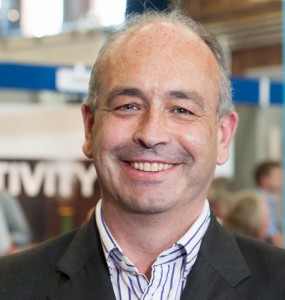The on-off, on-off Hinkley Point C rollercoaster may have failed to come to its expected conclusion on Thursday, but work on the massive site goes on, as Business West managing director Phil Smith found when he visited it last week.
Thirty tonnes with one scoop! That’s what each of the three massive yellow diggers can shift with one manoeuvre as they prowl somewhat ominously around the 400-acre site at Hinkley Point C. 
That’s like picking up 15 large family cars in one go. What adds to a bizarre industrial scene is the fleet of 100-tonne lorries that constantly feed off these monsters, like a stream of worker bees around their queen.
In its current state, which is more reminiscent of a lunar landscape than a modern power station, the site on the Somerset coast is being prepared for the construction of two new pressurised water nuclear reactors which, when operational, will generate 7% of the UK total electricity supply.
Given the age of many of the UK’s coal fired power stations this new source of low carbon energy is vital for the UK’s security of the supply of electricity over the next 30 years.
Such a base load of energy is an important ingredient in the UK’s need for a mix of new energy sources, as this constant energy source depends not on the wind blowing, the waves crashing or the sun shining.
Even an engineer like me, who honed my construction skills in the early 80s on the massive oil platforms of the North Sea, was taken aback by the planning and resources needed for the building of Hinkley Point C nuclear power station.
The scale of what is Europe’s largest construction project is simply eye watering – for example requiring more structural steel than nine aircraft carriers and five London Eyes put together.
A 500m jetty and four massive cement making plants are just two examples of constructions being installed temporarily, simply to build the power station. They all will be removed once the reactors are built.
A huge sea wall and double-skinned concrete dome, each as thick as a castle’s wall, are reassurances against natural and man-made disasters disturbing the 60-year life span of these reactor units.
The £18bn expenditure, the much quoted strike price of £92.50 per megawatt/hour and 25,000 jobs to be created are long trailed metrics for how big this project is. But seeing is believing and it’s the sheer physicality of the Hinkley construction site that has brought it to life for me.
Business West is the organisation behind Bath Chamber of Commerce. Hinkley Point C is expected to create 25,000 jobs and provide a £40m boost to the local economy every year.



















